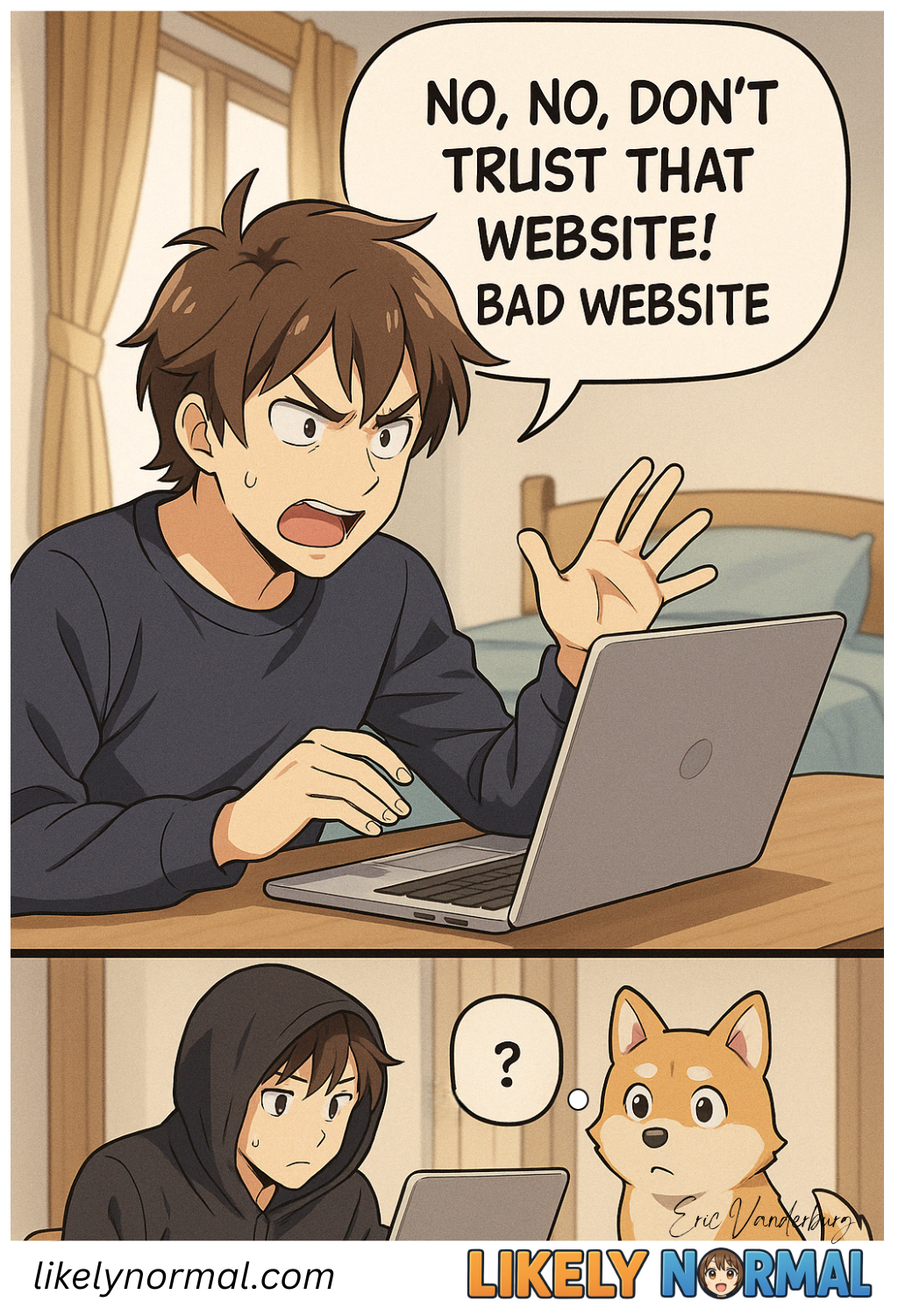Bad Website!
Explaining online safety to someone with low digital literacy often turns us into frustrated dog owners yelling “NO! BAD WEBSITE!” at their screens like they’re scolding a golden retriever chewing on a power cord. The struggle is real: how do you convey “This phishing link will drain your bank account” to someone who still thinks “the cloud” is just where rain comes from? So we dumb it down to toddler-level warnings, complete with the same tone you’d use on a pup about to pee on the rug – “Nooo, don’t click the shiny button! Bad pop-up! Go to your secure browser!”
The irony? Most cybersecurity advice either sounds like a condescending kindergarten lesson (“Never talk to strangers… even if they promise you free iPads!”) or an alien language (“Just check the SSL certificate’s SHA-256 fingerprint!”). There’s no in-between. So we’re stuck wagging our fingers like we’re herding overexcited puppies away from digital traffic – “Stay! Stay away from sketchy URLs! Good human!” – knowing full well they’ll still lick the next “You’ve won a million bucks!” scam like it’s a dropped chicken nugget.
Maybe we need a cybersecurity shock collar that gently zaps users when they hover over a malware link. Or just accept that some folks will forever treat password security like their grocery list (*”Password123 for everything? Good boy!”). Either way, until then, we’ll keep barking orders like we’re training very, very slow dogs to navigate a minefield of Nigerian princes and fake antivirus alerts. Sigh. Who’s a good internet user? Not you, Karen. Not you.

Discussion ¬